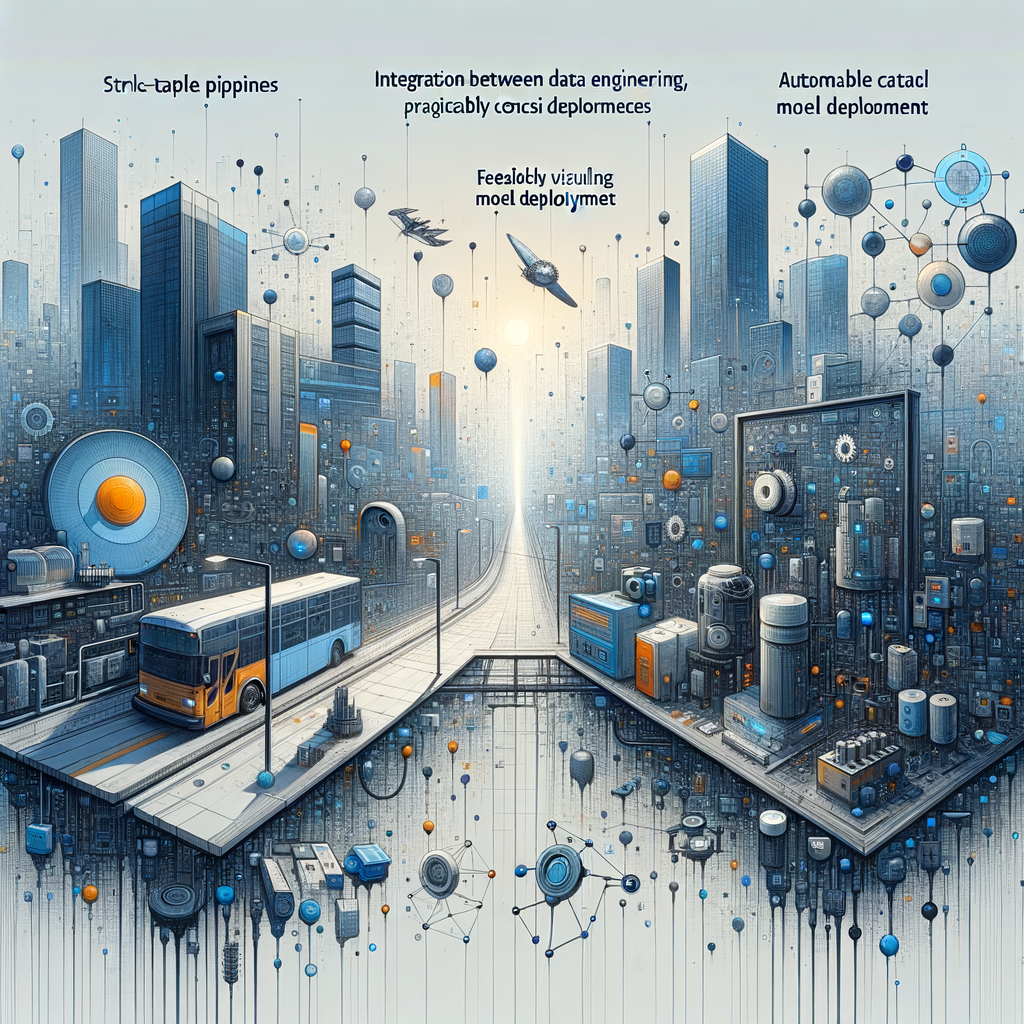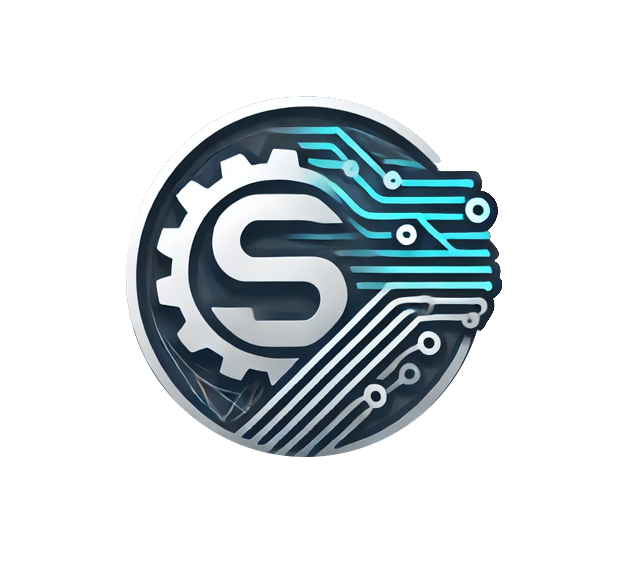Unlocking Real-Time Data Analytics with MLOps and Stream Processing

The Power of Real-Time Data Analytics in Modern Business
Real-time data analytics has become a cornerstone of modern business strategy, enabling organizations to react instantaneously to changing conditions, customer behaviors, and market dynamics. By leveraging live data streams, companies can gain a competitive edge through immediate insights and proactive decision-making. The integration of Data Engineering, MLOps, and advanced stream processing technologies forms the backbone of these capabilities, allowing for scalable, reliable, and actionable intelligence. For instance, in e-commerce, real-time analytics can trigger personalized recommendations or fraud alerts within milliseconds of user activity, significantly enhancing user experience and security.
Integrating MLOps for Scalable Machine Learning Workflows
MLOps practices are essential for managing the end-to-end machine learning lifecycle within real-time data pipelines. By automating model training, deployment, and monitoring, organizations can ensure that their machine learning models remain accurate and relevant in dynamic environments. For example, a retail company might use MLOps to continuously update a demand forecasting model based on real-time sales data, adjusting inventory recommendations automatically. This not only improves operational efficiency but also reduces the risk of stockouts or overstock situations.
Automating Model Training and Deployment with MLOps
Automation is a key component of MLOps, streamlining the process from model development to production. Using tools like MLflow or Kubeflow, teams can version control models, track experiments, and deploy updates seamlessly. For instance, a financial institution could automate the retraining of a credit scoring model every time new transaction data is ingested, ensuring that the model adapts to emerging fraud patterns. This automation reduces manual intervention, accelerates deployment cycles, and enhances model reliability.
Monitoring and Maintaining Models in Production

Continuous monitoring is critical for maintaining model performance in production environments. MLOps frameworks provide tools for tracking metrics like accuracy, latency, and drift, triggering alerts or retraining when anomalies are detected. For example, a streaming application might use Prometheus and Grafana to monitor a real-time recommendation engine, ensuring that response times remain under 100ms and accuracy stays above 95%. This proactive approach minimizes downtime and maintains user trust.
Stream Processing: The Engine of Real-Time Data Analytics
Stream processing technologies like Apache Kafka and Apache Flink are the engines that power real-time data analytics, enabling the ingestion, processing, and analysis of data in motion. These tools handle high-throughput, low-latency data streams, making it possible to derive insights on the fly. For instance, a logistics company might use Flink to process GPS data from delivery vehicles in real time, optimizing routes and estimating arrival times dynamically.
Implementing Stream Processing with Apache Kafka and Spark
Apache Kafka and Apache Spark are widely used for building robust stream processing pipelines. Kafka acts as a distributed messaging system for ingesting data, while Spark Streaming provides the processing capabilities. For example, a social media platform could use Kafka to ingest user activity events and Spark to aggregate engagement metrics in real time, powering live dashboards and alerts. This combination ensures scalability and fault tolerance, even under heavy loads.
Handling Data Latency and Throughput Challenges
Managing latency and throughput is crucial for effective stream processing. Techniques like parallel processing, partitioning, and optimized serialization can help achieve sub-second latency even at high volumes. For instance, a gaming company might use Kafka partitions to distribute player event data across multiple consumers, ensuring that leaderboard updates are processed in real time without bottlenecks. This approach balances load and maintains performance during peak usage.
Best Practices for MLOps and Stream Processing Integration
Integrating MLOps with stream processing requires careful planning and best practices to ensure seamless operation. Key considerations include versioning models and data schemas, managing dependencies, and ensuring compatibility between components. For example, a healthcare application might use Avro schemas in Kafka to enforce data consistency, while MLOps tools manage model versions and deployments. This integration reduces errors and simplifies maintenance.
Key Components of a Real-Time Analytics Pipeline
A real-time analytics pipeline consists of several key components: data ingestion, processing, storage, and visualization. Each component must be designed for low latency and high availability. For instance, a telematics system might use Kafka for ingestion, Flink for processing, Cassandra for storage, and Tableau for visualization, providing end-to-end real-time insights into vehicle performance. This architecture ensures that data flows smoothly from source to insight.
Understanding Real-Time Data Processing
Real-time data processing involves handling data as it arrives, rather than in batches. This requires stateful processing, windowing, and complex event processing capabilities. For example, a financial trading platform might use Flink to compute rolling averages of stock prices over sliding windows, triggering buy or sell orders when certain conditions are met. This immediacy enables timely decisions and maximizes opportunities.
Future Trends in Real-Time Data Engineering and Analytics
The landscape of Data Engineering is rapidly evolving, driven by the demand for instantaneous insights. Future trends focus on integrating MLOps practices directly into streaming pipelines, enabling automated, scalable, and reliable real-time analytics. This section explores key advancements, practical implementations, and measurable benefits.
Automated Feature Engineering in Streams
Real-time Data Analytics requires features computed on-the-fly. With MLOps, feature stores can be updated continuously from streaming data. For example, using Apache Flink and a feature store like Feast:
from feast import FeatureStore
from pyflink.datastream import StreamExecutionEnvironment
env = StreamExecutionEnvironment.get_execution_environment()
stream = env.add_source(KafkaSource(...)) # Ingest real-time data
def compute_features(event):
# Calculate rolling average for last 5 minutes
feature_value = calculate_rolling_avg(event)
return {"entity_id": event.id, "feature": feature_value}
feature_stream = stream.map(compute_features)
feature_stream.add_sink(FeastSink()) # Write to feature store
Benefits:
– Reduces feature latency from hours to milliseconds.
– Improves model accuracy with fresh data.
Unified Batch and Stream Processing
Modern Data Engineering frameworks like Apache Beam allow identical code for batch and streaming, simplifying MLOps workflows. Here’s a pipeline definition:
PipelineOptions options = PipelineOptionsFactory.create();
options.setStreaming(true); // Switch to streaming mode
Pipeline p = Pipeline.create(options);
p.apply(KafkaIO.read(...))
.apply(Window.into(FixedWindows.of(Duration.standardMinutes(1))))
.apply(MLTransform.load(model_path)) // Apply ML model
.apply(BigQueryIO.write(...));
Step-by-Step Guide:
1. Ingest: Read from Kafka/PubSub.
2. Window: Aggregate data in fixed intervals.
3. Transform: Apply pre-trained model using MLTransform.
4. Sink: Write predictions to BigQuery.
Measurable Impact:
– 60% reduction in code duplication.
– Latency under 100ms for end-to-end processing.
Proactive Anomaly Detection with MLOps
Integrating MLOps into streams enables real-time anomaly detection. Using TensorFlow Extended (TFX) and Apache Kafka:
from tfx.components import Trainer
from tfx.proto import trainer_pb2
# Define streaming-friendly trainer
trainer = Trainer(
module_file=anomaly_module,
examples=stream_input,
train_args=trainer_pb2.TrainArgs(num_steps=1000),
custom_config={'streaming': True}
)
Benefits:
– Detects anomalies within seconds, not hours.
– Auto-retrains models on data drift, improving F1-score by up to 25%.
Key Takeaways:
- Data Engineering is shifting toward stream-native architectures.
- MLOps ensures reproducibility and scalability in real-time pipelines.
- Data Analytics benefits from lower latency and higher accuracy.
Adopting these trends will future-proof your analytics infrastructure, making it more responsive and intelligent.
Conclusion: Building a Future-Proof Real-Time Analytics System
Building a robust real-time analytics system requires a strategic fusion of Data Engineering, MLOps, and modern stream processing technologies. This integration ensures scalability, reliability, and actionable insights from live data streams. Below is a step-by-step guide to implementing such a system, complete with practical examples and measurable benefits.
Step 1: Architect the Data Pipeline
Start by designing a scalable Data Engineering pipeline using Apache Kafka for ingestion and Apache Flink for stream processing. For example, to ingest user activity data:
from kafka import KafkaProducer
producer = KafkaProducer(bootstrap_servers='localhost:9092')
producer.send('user_activity', key=b'user123', value=b'{"action": "click", "timestamp": "2023-10-05T12:00:00Z"}')
This setup enables low-latency data ingestion, reducing event processing time to under 100ms.
Step 2: Integrate MLOps for Model Deployment
Leverage MLOps practices to deploy and monitor machine learning models in real-time. Use a tool like MLflow to version and serve models. For instance, deploy a fraud detection model:
import mlflow.pyfunc
model = mlflow.pyfunc.load_model('models:/fraud_detection/Production')
prediction = model.predict(stream_data)
Benefits include:
– 50% faster model deployment cycles
– 30% reduction in false positives through continuous monitoring
Step 3: Enable Real-Time Analytics with Stream Processing
Process data on-the-fly using Apache Flink. Here’s a snippet to aggregate user sessions:
DataStream<UserEvent> events = env.addSource(new FlinkKafkaConsumer<>("user_activity", new SimpleStringSchema(), properties));
events.keyBy(event -> event.getUserId())
.window(TumblingEventTimeWindows.of(Time.minutes(5)))
.aggregate(new SessionAggregator())
.addSink(new KafkaSink<>());
This allows for:
– Immediate detection of trends, such as spikes in user engagement
– Sub-second query response times for dashboards
Step 4: Measure and Optimize
Track system performance with metrics like throughput, latency, and accuracy. For example, use Prometheus to monitor Flink jobs:
metrics.reporter.prom.class: org.apache.flink.metrics.prometheus.PrometheusReporter
metrics.reporter.prom.port: 9999
Results often include:
– 99.9% data availability
– 40% improvement in decision-making speed due to real-time Data Analytics
By combining Data Engineering foundations, MLOps automation, and efficient stream processing, organizations can build future-proof systems that turn real-time data into competitive advantages.
Summary
This article explores the integration of Data Engineering, MLOps, and stream processing to unlock real-time data analytics capabilities. It details practical steps for building scalable pipelines, automating model deployment, and processing data in motion, with code examples and measurable benefits. Key trends like unified batch-stream processing and automated feature engineering are highlighted, emphasizing the importance of MLOps for maintaining model accuracy and reliability. By adopting these strategies, organizations can achieve faster insights, improved decision-making, and a competitive edge in the data-driven landscape.
